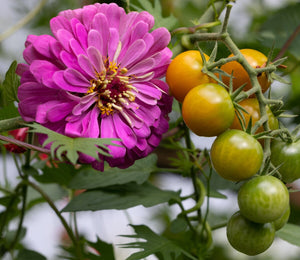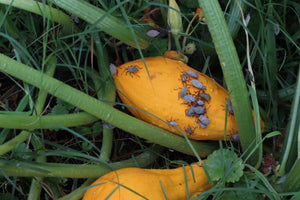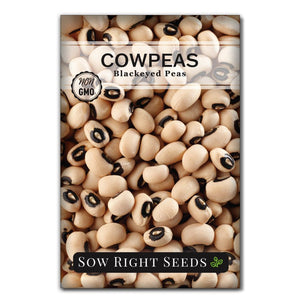10 Best Low-Maintenance Perennial Flowers for Stress-Free Gardens
Let’s face it. We love flowers, but sometimes life happens, and we get a little behind in our flower garden maintenance. If you want beautiful flowers that bloom all summer without any extra work from you, take a look at our ten favorite low-maintenance perennial flowers.

Flower gardens don’t have to be high maintenance. There’s no reason why you can’t enjoy beautiful blooms all summer long, no matter what else you’ve got going on. Growing perennial flowers means you don’t have to worry about extra watering or special fertilizers. Once these perennial plants are established, they are extremely low maintenance.
Many of these perennial seeds need to be cold-stratified before planting. You can follow our easy tips for cold stratification, use the winter sowing method, or plant your perennial flower seeds in the fall.
That’s the only extra effort these resilient flowers will need. After that, they are very independent flowering plants.
Our Favorite Perennial Flowers That Are Low Maintenance
Bee Balm

Bee Balm goes by many names. Also known as Wild Bergamot, its botanical name is Monarda fistulosa. This perennial wildflower herb is native to the North American continent and has a rich tradition of use as both a culinary and medicinal herb. So you can enjoy it as a medicinal and beautiful flowering plant.
Bee Balm grows up to 5 feet tall and has lavender-colored flowers that attract hummingbirds and butterflies. Bee balm seeds can be planted in autumn with yarrow and cone flowers. As the plant grows, branches can be pinched off to make tea.
Black-eyed Susan

There may not be an easier plant to grow than Black-eyed Susans. These flowers are so low maintenance that they will even thrive in clay soil. They prefer full sun but will also grow in dappled shade. While they’re blooming from summer to fall, Black-eyed Susans attract butterflies and bees. Then, when they’ve gone to seed, goldfinches will come and enjoy the delicious treat.
Cut Black-eyed Susan (Rudbeckia hirta) flowers to enjoy their beauty indoors, where they have a long vase life.
Liatrus

Also known as Blazing Star and Gayfeather, Liatris spicata are striking flowers that can grow to 4 feet tall. The sturdy stems and unique flowering stalks make a statement along walkways where their feathery purple flowerheads attract hummingbirds and butterflies.
Cold stratify the seeds for the best germination. Once plants are established, cutting off the stalks when they flower will encourage more blooms.
Lavender

Many gardeners are surprised by how low-maintenance lavender flowers are. Established lavender plants are hardy perennials that don’t mind the heat and are drought-tolerant. A healthy lavender plant will easily grow for five to 10 years. To start lavender from seeds, you need to cold-stratify the seeds. You can also sow lavender seeds in the winter, and they’ll sprout when the ground warms up in the spring.
With a beautiful aroma and spikes of purple flowers, lavender flowers are a perfect border plant along garden walkways. They’re also resistant to deer and rabbits.
Milkweed

Milkweed plants are essential to the lifecycle of monarch butterflies. Milkweed seeds need cold stratification to germinate, but once they’re growing, they’ll be hands-off the rest of the time.
Swamp milkweed (Asclepias incarnata) and butterfly weed (Asclepias tuberosa) are two milkweed species that work well in perennial flower beds.
To keep milkweed from self-seeding, pick seed pods before they are fully developed. Or leave them to grow and drop seeds if you want your milkweed plants to keep spreading.
Coneflower

Purple Coneflower (Echinacea purpurea) is the most well-known and most commonly grown of the nine Echinacea species. A native wildflower of central and eastern North America, it is identified by its hedgehog-looking center and purple daisy-like petals.
Not only is it a low-maintenance perennial, coneflower is a popular medicinal plant. The beautiful flowers can be enjoyed in cut flower arrangements or steeped in hot water for tea.
Shasta Daisy

Another low-maintenance perennial is the reliable Shasta Daisy. This classic white flower with a sunny yellow center will add a cheerful touch to your garden. Shasta Daisies will bloom all summer long and attract beneficial insects to your garden.
Plant Shasta daisies in wildflower and cottage gardens, where they will continue to grow every year. They can grow best in full sun and fertile soil, but daisies also can tolerate part shade and poorer soils. Cut them for a long-lasting cut flower and to encourage more blooms.
Coreopsis

Perennial Dwarf Lance-Leaved Coreopsis, or Lanceleaf Tickseed, is a versatile and resilient plant. It thrives in various light conditions, including full sun, part shade, and shade, making it adaptable to different garden environments.
Dwarf Lance Leaved Coreopsis is particularly well-suited for gardens in hot, dry climates due to its low-maintenance nature and drought tolerance.
It blooms from late spring to early fall. This long blooming period makes it an essential food source for these crucial pollinators. In addition, the nectar in the flowers appeals to butterflies and bees, while the seeds are a favorite among birds.
Yarrow

Yarrow is a popular flower in cut, cottage, and wildflower gardens. It is easy to grow and thrives in sandy soils with full sun. Yarrow plays a vital role in attracting beneficial insects and has many traditional medicinal benefits. Yellow yarrow is one of the most common varieties, but it comes in various colors.
Cutting off yarrow flowers will encourage the plant to put out more growth throughout the growing season. If yarrow plants start outgrowing their space, just cut them back.
Blanket Flower

Blanket flowers are known for their unique color patterns. The fiery red and yellow petals will bloom from summer until the first frost. They love hot, dry weather and will grow in spots that are too intense for other flowers. Blanket flowers are so tough and low maintenance that you don’t even need to mulch around the plants because they prefer dry, sandy soil. Once established, they only need watering during extremely dry spells. They attract pollinators but are deer and rabbit-resistant.
Plant a mass of blanket flowers next to a mass of Shasta Daisies for a beautiful, interesting contrast.
If you want to grow flowers the easy way, invest in these low-maintenance perennials. They’ll come back year after year with their beautiful blooms. All you have to do is sit back and enjoy the view while nature takes its course.







Leave a comment